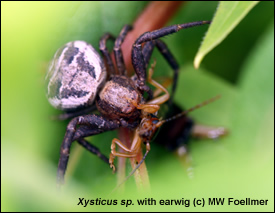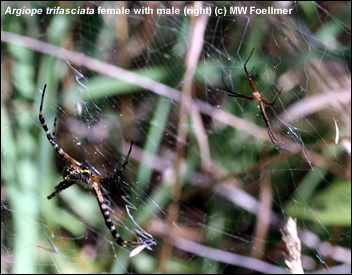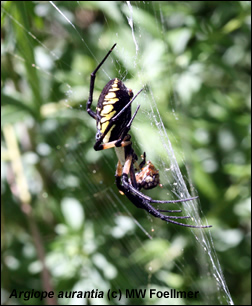| Matthias W. Foellmer |  |
Evolutionary Ecology and Diversity of Spiders |
||||||
|---|---|---|---|---|---|---|---|---|
|
|
||||||||
Research in my lab integrates questions and methods of ecology and evolutionary biology. In particular, I am interested in how ecological factors and mechanisms interact with the reproductive roles of females and males to generate evolutionary processes and thus lead to the evolution of sex-specific organismal characteristics (for example reproductive strategies, morphology, life history, physiology). This includes applied problems such as understanding how the sexes may respond differently to, for example, climate change and pollution. |
|
I am generally fascinated by spiders, the major predator group that is centrally positioned in terrestrial food webs, unique for their life-long use of silk. Spiders lend themselves as great models for many research questions; therefore we use them extensively as such. Current lines of investigation in my lab include the evolutionary significance of
|
 |
A new project that we are developing investigates changes in community structure in response to varying levels of human disturbances in coastal ecosystems. |
|
To address our research questions we conduct studies in the field as well as in the lab and we use a variety of techniques such as selection analysis, staged mating experiments, quantitative genetic studies, software-based digital photo and video analysis. |
|
Currently, I also collaborate with Jordi Moya-Laraño (Cantabrian Institute of Biodiversity, Spain), Gary Burness (Trent University, Canada), Jeffrey Stoltz and Maydianne Andrade (both University of Toronto at Scarborough, Canada) on various topics related to the evolution of sexual dimorphism. |
|
Interested students should email me. For example, Masters students have a good chance of getting a TA position in the biology department which pays full tuition and provides a small stipend. Additional support may also be available. |
|
 |
 |
|
|